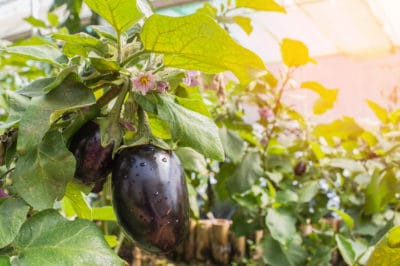Male and Female Organs in Every Eggplant Flower
If you’re confused by all the talk about male and female eggplants, this might help clear up a few facts regarding this myth. All eggplants come from the female parts of the eggplant flower. However, eggplants also have male organs that exist in every flower, which makes the plant self-fertilizing. The pollen from the male organ transfers to the female organ in the flower, which forms the fruit.
The Myths Surrounding Male Eggplant Gender
The following are a few of the myths surrounding the gender of eggplants:
- Male eggplants have fewer seeds
- Male eggplants have a round dent on the bottom of the fruit
- Male eggplants taste better
All of these old-wives’ tales about male eggplants are false. Simply put, there are no male or female eggplants. They are all the same. When picking your eggplants, or choosing one from the supermarket, look at the color, texture and size of the eggplant, instead of trying to determine if it’s male or female. Picking your eggplants at the right time determines whether they’ll be tender and tasty, or bitter and seedy, not the gender.
Choosing the Tastiest Eggplants
When it’s time to pick your eggplants, you can find the tastiest and most tender ones by following a few guidelines.
- Always harvest your eggplants when they’re still young. Look for ones with shiny, firm skin, without soft spots or pest damage.
- When you press the skin with your finger, it should spring back to its original shape.
- If your eggplant is still green, or you can’t press the skin, it’s under ripe.
- Young eggplants also have a green, velvety stem.
Another benefit of picking young eggplants is it boosts more eggplant growth and lengthens your growing season.
How to Tell if Eggplant Is Overripe
If you let your eggplants become too large, the skin becomes dull, the flesh tastes bitter, and the seeds grow large and brown. The flesh of overripe eggplants also develops a spongy texture.
